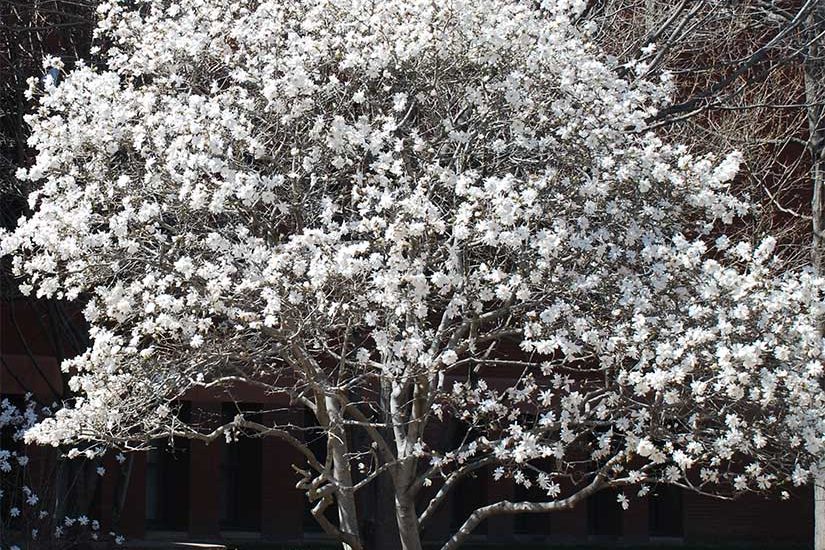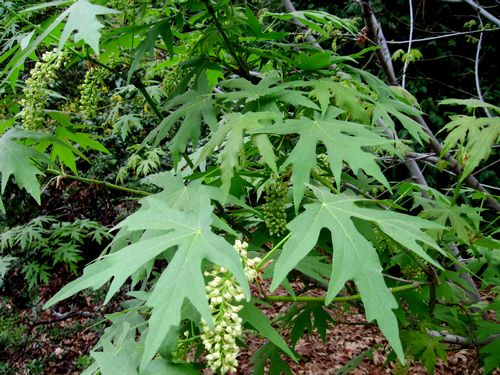The Best Ornamental Trees to Grow in Pennsylvania
A well-designed garden is more than just a collection of different plants. To create a harmonious and inviting space, it is important to consider the overall layout and flow of the garden. One of the best ways to add interest and visual appeal to a garden is to incorporate ornamental plants. These plants can create focal points, define boundaries, and add color and texture. When selecting ornamental plants, it is important to consider their size, shape, and color. Most importantly, ensure that the plants selected are suitable for the location. The following ornamental trees can re-define your Pennsylvania garden:
Purple Prince Crabapple (Malus sylvestris ‘Purple Prince)
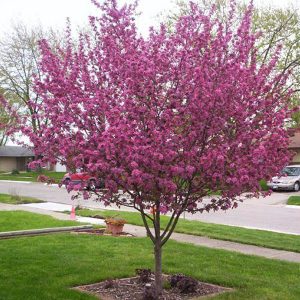
Purple Prince Crabapple (Malus sylvestris’ Purple Prince) is a deciduous shrub or small tree known for its clusters of dark purple flowers blooming in early spring. The flowers are followed by tiny, dark purple fruit that ripens in late summer. Purple Prince Crabapple is a relatively slow-growing plant, reaching a height of 10-15 feet over 10-20 years. It does best in full sun and can tolerate various soil types, including clay and sand.
Purple Prince Crabapple makes an excellent ornamental plant for the home landscape. It can be used as a specimen plant or planted in mass for a hedge or privacy screen. It is also a good choice for planting under power lines or near street lights, where it will not grow too tall. Purple Prince Crabapple is deer and rabbit-resistant and has no significant pest problems. This tree is susceptible to fire blight, scabs, powdery mildew, and cedar-apple rust. You should prune it in late winter before new growth begins.
Star Magnolia (Magnolia stellata)
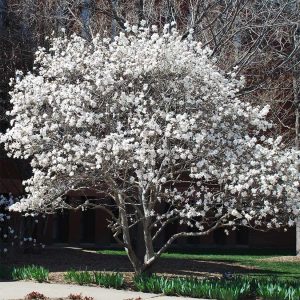
The Star Magnolia (Magnolia stellata) is a small shrub or tree indigenous to Japan. Its star-shaped white flowers characterize its bloom in early spring before the leaves appear. The flowers are relatively large for the plant’s size and have a light, sweet fragrance. The plant typically grows to a height of 6-10 feet, with a spread of 4-6 feet. The leaves are dark green and glossy, turning yellow or brown in the fall. Star Magnolias are popular ornamental plants often used as foundation or specimen plants in gardens. They are also popular as bonsai trees. The plant is relatively easy to care for, and it can be grown in full sun or partial shade. It is tolerant of most soil types, but it prefers well-drained soil. Star Magnolias should be pruned after flowering to keep the plant compact and encourage dense growth.
Japanese Stewartia (Stewartia pseudocamellia)
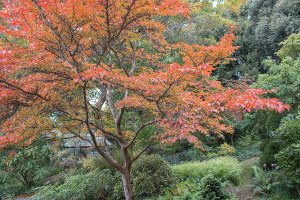
Japanese Stewartia (Stewartia pseudocamellia) is a small to medium-sized deciduous broadleaf tree that grows 20-30 feet tall with a rounded crown. It is native to Japan, Korea, and China. The leaves are alternate, simple, obovate to elliptical, 3-5 inches long and 2-3 inches wide, with a serrated margin and a prominent midvein. The upper surface of the leaves is dark green and glossy, while the lower surface is paler green. The flowers are white or pink, with five petals and numerous stamens. They are borne in clusters of 2-5 flowers, and blooming occurs in late spring or early summer. The fruits are brown capsules, each containing 1-2 seeds.
Japanese Stewartia can be used in a variety of landscape settings. It makes an excellent specimen tree for small gardens or yards and can also be planted in groupings. Japanese Stewartia does best in full sun to partial shade and moist, well-drained soils. It is relatively tolerant of urban pollution and salt spray. However, it does not tolerate wet soils. Japanese Stewartia should be pruned immediately after flowering to shape the tree or remove damaged or diseased branches.
Seven-Son Flower (Heptacodium miconioides)
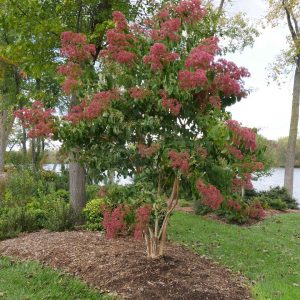
The Seven-Son Flower (Heptacodium miconioides) is a deciduous shrub native to China. It is named for its seven stamens, the male reproductive organs of the flower. The Seven-Son Flower is a member of the honeysuckle family and is closely related to the widely cultivated Japanese honeysuckle (Lonicera japonica). The Seven-Son Flower is distinguished from other members of its family by its large, showy flowers and glossy, dark green leaves. The flowers are white with a pink or purple tinge and have a sweet fragrance. They bloom in late summer and early fall, long after most other flowers have faded. The Seven-Son Flower is an easy plant to grow and care for, and it is relatively pest and disease-resistant. It can be grown in full sun or partial shade and does not require frequent watering. Once established, it will flower profusely with little care from the gardener.
Crape Myrtle (Lagerstroemia indica)
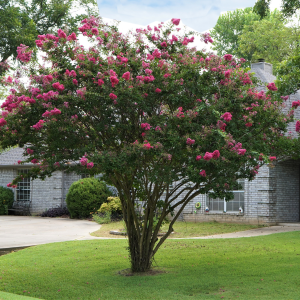
The Crape Myrtle, or Lagerstroemia indica, is a flowering shrub native to East Asia. It belongs to the Lythraceae family, including the bleeding heart and loosestrife. The Crape Myrtle is a popular landscaping plant due to its showy flowers and ability to tolerate various conditions. The shrub can grow to a height of 15 feet, and its glossy leaves turn a beautiful red, orange, or yellow in the fall. The Crape Myrtle produces clusters of small, pink, white, or purple flowers from June to September. These flowers are followed by dark-colored fruits that are attractive to birds. The Crape Myrtle is tolerant of most soil types and can thrive in full sun or partial shade. It is also resistant to drought and heat, making it an ideal plant for hot, dry climates. With its multi-seasonal interest and ease of care, it’s no wonder that the Crape Myrtle is such a popular landscaping plant.
Royal Empress Tree (Paulownia tomentosa)
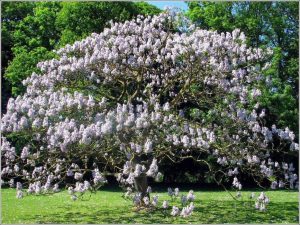
The Royal Empress Tree (Paulownia tomentosa) is a deciduous tree native to central China. It is one of the largest members of the Paulownia genus, growing up to 30m tall with a trunk diameter of 1m. The tree produces large, heart-shaped leaves covered in soft, downy hairs. In late spring, the tree bears clusters of fragrant, tubular flowers which range in color from white to purple. The flowers are followed by long, thin seed pods containing hundreds of small seeds. The tree is fast-growing and becomes drought-tolerant once established. It prefers full sun and well-drained soil but will tolerate a wide range of conditions. Due to its rapid growth and attractive flowers, the Royal Empress Tree is often planted as an ornamental tree in parks and gardens. It is also used in traditional Chinese medicine.
Black Diamond
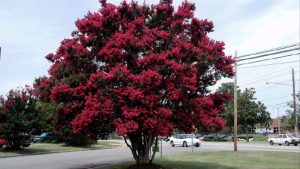
Black Diamond is a flowering plant in the family Lythraceae, native to tropical Asia. Small- medium-sized trees typically grow 15-20 m tall with a spreading crown. The leaves are oblong-elliptic to lanceolate, 6-12 cm long and 2-4 cm broad, with an entire or finely toothed margin. The flowers are borne in terminal panicles 10-30 cm long, each flower 3-4 cm in diameter, with six lavender to purple petals. The fruit is a drupe 5-7 mm in diameter, ripening red to purple. Black Diamond is widely used as an ornamental plant in landscaping for its showy flowers and foliage. It can be trained as a hedge or topiary and is popular for use in bonsai. It can also be grown in pots and containers. Black Diamond grows best in well-drained soils in full sun to partial shade. It is tolerant of a wide range of soil types and pH levels but prefers moist, fertile soils. It is drought tolerant once established but will perform best with regular watering during the growing season. Black Diamond is moderately salt tolerant. Propagation is by seed or semi-hardwood cuttings.
Little-leaf Linden (Tilia cordata)
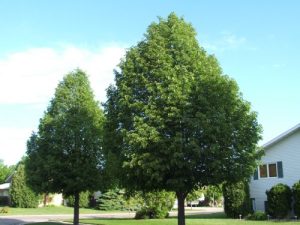
Little-leaf linden (Tilia cordata) is a deciduous tree that is native to Europe and Asia. It is a popular tree for landscaping due to its attractive leaves and fragrant flowers. The leaves of the little-leaf linden are heart-shaped and have a glossy texture. They are arranged in pairs along the branches and turn yellow in the autumn. The flowers are small and borne in clusters, blooming in early summer. The fruit is a hard, nut-like drupe that matures in late summer or early fall. Little-leaf linden trees typically reach a height of 30-40 feet, with a spread of 20-30 feet. They prefer full sun to partial shade and moist, well-drained soil. Once established, they are relatively drought tolerant. Little-leaf lindens are susceptible to aphids, caterpillars, and scale insects. However, they are generally disease resistant. These trees make an excellent addition to any landscape due to their pleasing form and function.
Autumn Flowering Cherry (Prunus subhirtella)
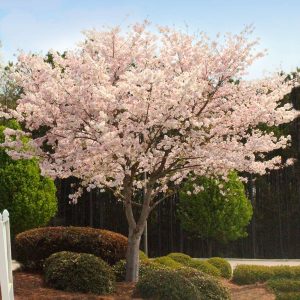
The Autumn Flowering Cherry (Prunus subhirtella) is a beautiful deciduous tree native to Japan. It is commonly used for landscaping in temperate regions and is prized for its spectacular display of flowers in the autumn months. The tree typically grows to a height of 15-20 feet, with a spread of 20-30 feet. The trunk is slender and upright, with smooth grey bark. The branches are gracefully curved and covered in dark green foliage that turns crimson in the fall. The most notable feature of the Autumn Flowering Cherry is its flowers. The blooms are small and pink, appearing in clusters from late September to early October. The flowers are followed by small, dark cherries ripen in the summer. The Autumn Flowering Cherry is an attractive and low-maintenance tree that makes an excellent addition to any landscape.
Bull Bay (Magnolia grandiflora)
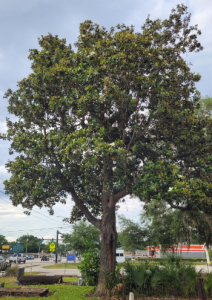
The Magnolia grandiflora, also known as the southern magnolia or bull bay, is a large evergreen tree native to the southeastern United States. It is a popular landscaping tree due to its striking appearance and ability to thrive in a variety of conditions. The Magnolia grandiflora can grow over 100 feet tall, with a massive trunk and pyramidal-shaped crown. The leaves are large and glossy green, with a leathery texture. The flowers are white and fragrant, with a diameter of up to 12 inches. The fruit is a red cone-like structure that contains several small seeds. Magnolias are often used as specimen trees in gardens and parks, and they can also be planted in rows to create an elegant privacy hedge. When choosing a location for your Magnolia grandiflora, select an area with well-drained soil and full sun to partial shade. With proper care, your Magnolia grandiflora will provide you with years of beauty and scenic views.

